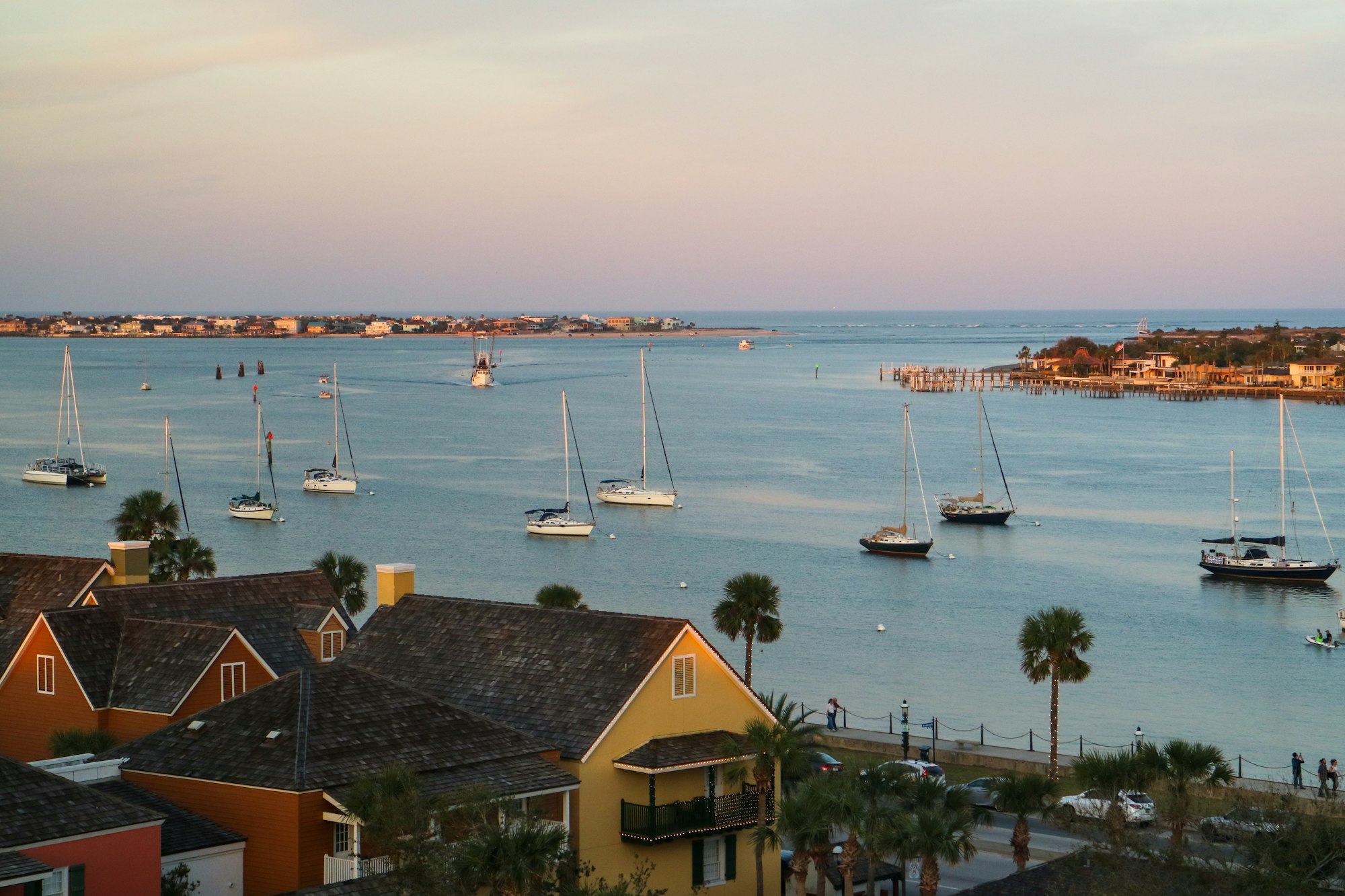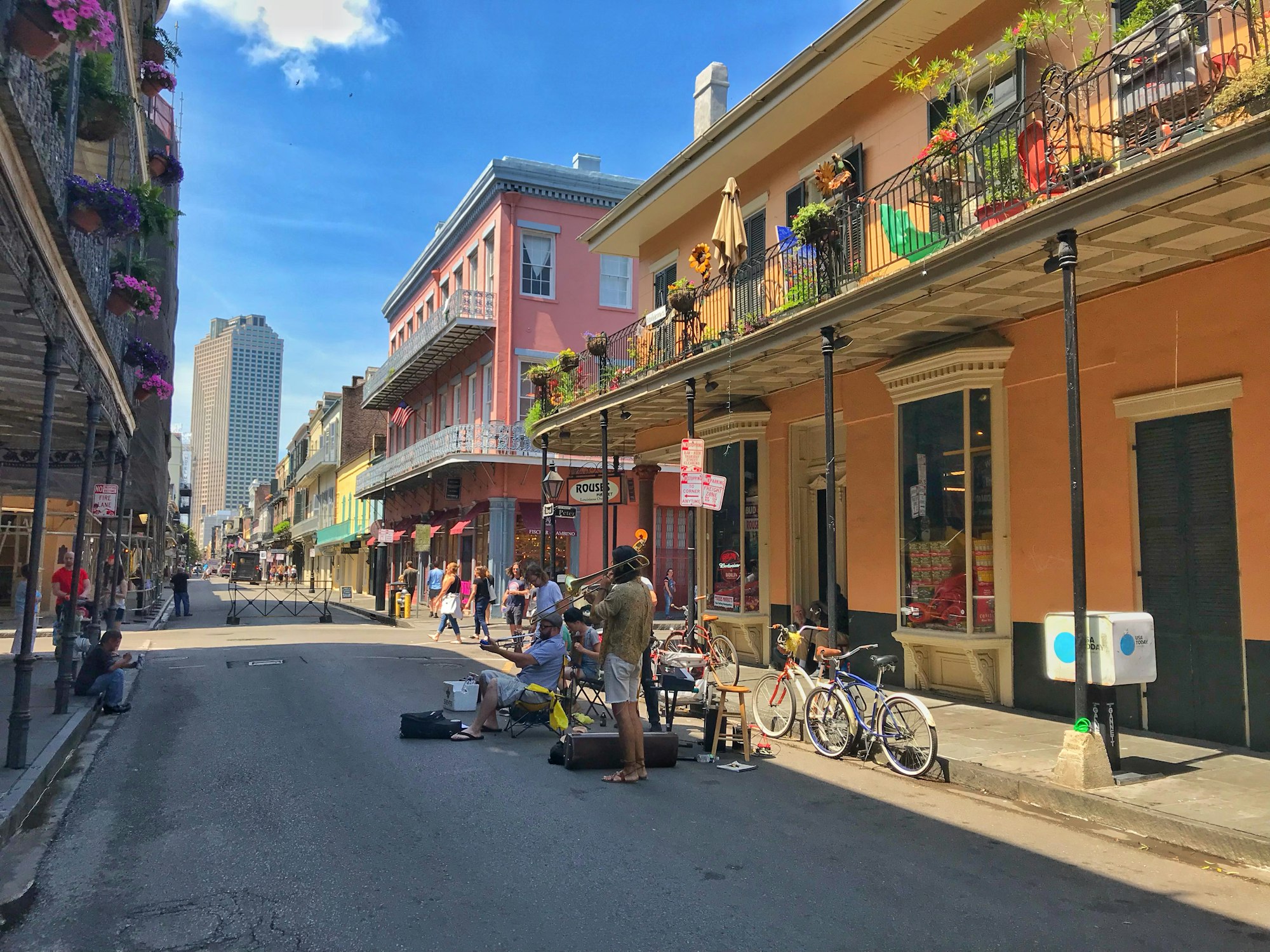Little known fact: Spanish was the first European language spoken in what is now the United States of America. Many Spanish-speaking communities have thrived here for centuries. In honor of Hispanic Heritage Month, which runs from September 15 to October 15, we're exploring 6 cities where Spanish has been spoken since before the USA was established– and how Hispanic and Latin American culture still makes a mark on those cities to this day.

St. Augustine, Florida
St. Augustine holds the distinction of being the oldest permanent European settlement in the USA. It's often called the oldest city in the country. (More on that later– check "An Important Note" at the end of this blog post.) A Spanish admiral named Pedro Menéndez de Avilés established the settlement in 1565, naming it after Saint Augustine because his sailors first sighted land on that saint's feast day. For over 200 years, the city was known as the capital of Spanish Florida.
Today, around 5% of people in St. Augustine speak Spanish at home. Although it's a fairly small city, it's a great place to learn how Spanish culture has helped shape the nation. Tourists come to enjoy the architecture and history, including the Fountain of Youth National Archaeological Park, the Castillo de San Marcos (the oldest masonry fort in the USA), and the allegedly haunted St. Augustine Lighthouse. Every May, visitors can enjoy a local Latin American music festival. The city also holds a Spanish wine tasting festival every September!

Santa Fe, New Mexico
Settled in 1607 and officially founded as the capital of Nuevo México in 1610, Santa Fe is considered the oldest European-settled city west of the Mississippi River. It's considered the oldest capital city in the USA and existed under rule of Spain, Tewa Puebloans, Mexico, the Confederacy, and the United States. The history of the city is pretty astonishing. Visitors can see the oldest church (San Miguel Chapel, 1610) and the oldest government building (Palace of Governors, 1610-1612) in the continental United States. The city also has one of the nation's best arts scenes!
Today, almost 33% of people in Santa Fe speak Spanish at home, and around 55% of the population describes themselves as being of Hispanic or Latino/Latina/Latinx heritage. The city hosts a traditional Spanish Market every summer and celebrations for Día de Muertos each October. Don't miss the fantastic local food! New Mexican cuisine has its own distinctive flavors and history– and lots and lots of locally grown green and red chiles!

San Antonio, Texas
Founded in 1718, San Antonio is one of the biggest cities in the Southern USA. Like many cities on this list, it was named after a saint– specifically Saint Anthony of Padua– and its historic missions give it a special claim to fame. UNESCO has designated San Antonio's missions as a World Heritage Site. The most famous is the Alamo, which is much more famous for its history as a fort during Texas' war for independence from Mexico than as a religious center.
San Antonio has the honor of being the largest majority-Hispanic city in the USA. Around 65% of the population identify as Hispanic/Latin American, around 39% of whom speak Spanish at home! San Antonio is hosting a wealth of cultural, historical, and arts programs for Hispanic Heritage Month– check some of them out here! A Hispanic Heritage Celebration for the whole family will take place at the San Antonio Museum of Art on October 16.

New Orleans, Louisiana
This city's a little different from some of the others on this list. Though it was founded in 1718, the same year as San Antonio, it was colonized by the French, not the Spanish. The name, after all, is a pretty big hint. But in 1763, French handed over control of Louisiana to Spain after the Seven Years' War, and for 40 years, it was considered a Spanish city before it became part of the USA.
New Orleans doesn't have a huge Spanish-speaking population today– about 5% of people speak the language at home and around 8% of people in the city self-identify as Hispanic or Latino. Still, the city's Spanish history makes a big mark on its culture. Many people don't know that much of the architecture of New Orleans' famous French Quarter is actually Spanish. The famous Louisiana Creole cuisine is influenced by French, Spanish, West African, Caribbean and indigenous cooking traditions. (For example, jambalaya has a few elements in common with paella!)

San Diego, California
San Diego became the first European settlement in California when it was founded in 1769. Like some of the other cities on this list, it all started with a fortress and a mission. San Diego changed hands between Spain, Mexico, and the United States within less than a century. Today, San Diego is still located right by the border between the USA and Mexico, and much of its local culture is influenced by Mexico.
Roughly a quarter of people in San Diego speak Spanish at home and about 30% boast Hispanic or Latino heritage. In addition to some of the finest parks and museums in the country (don't miss Balboa Park!), there are so many ways to celebrate Hispanic heritage in San Diego. To name a few, stroll the historic streets of Old Town San Diego State Historic Park, enjoy the country's largest collection of Chicano murals in Chicano Park, learn about Latino art and culture at Centro Cultural de la Raza, or join in the city's huge Día de Muertos festivities!

El Paso, Texas
First settled in 1680, El Paso holds a unique honor: most bilingual city in the USA! Almost 70% of the population speaks another language besides English and nearly 40% are bilingual or multilingual! As you might be able to guess from the name of the city, Spanish is the most spoken language in El Paso. Over 81% of people in the city have Hispanic/ Latin American heritage! Like San Diego, El Paso is located right on the border between the USA and Mexico.
The El Paso Museum of History is a great place to learn more about El Paso's history as a multicultural border region, featuring a unique interactive digital wall and over 10,000 artifacts, documents, images, and stories about the city's history. For a more modern cultural experience, check out Centro Cultural Paso del Norte! And be sure to try some of the city's excellent and authentic Mexican food while you're there.
An important note
Although we're celebrating Hispanic heritage, it's worth noting that none of these cities or communities truly got their start with Spanish settlements. The Timucua people lived in the St. Augustine area long before the Spanish arrived. Not only did Pueblo people inhabit the Santa Fe area before was Santa Fe, they actually drove out the Spanish and reclaimed the government for 12 years in the late 16th century. Several Coahuiltecan bands lived in the San Antonio region, and many indigenous groups still live in the San Diego and El Paso areas. Spanish colonial rule greatly affected indigenous people's way of life, and not all Hispanic Americans' ancestors learned the language voluntarily.
Many Latinx people today have both indigenous and Spanish heritage, and this means a complicated legacy. But today, Hispanic Americans in the USA have developed unique traditions, cuisines, art forms, and more– creating cultures you can't find anywhere else on earth!

 Spanish
Spanish
 French
French
 Italian
Italian
 Arabic
Arabic
 Portuguese
Portuguese
 German
German
 Chinese
Chinese
 Japanese
Japanese
 Russian
Russian